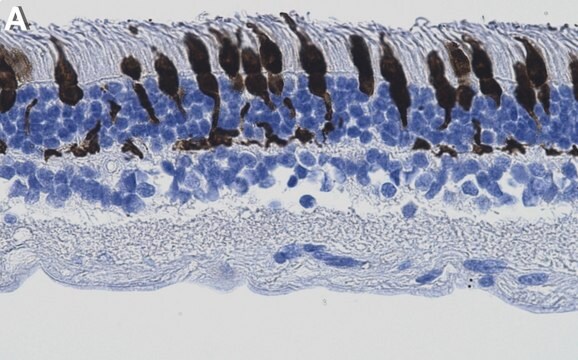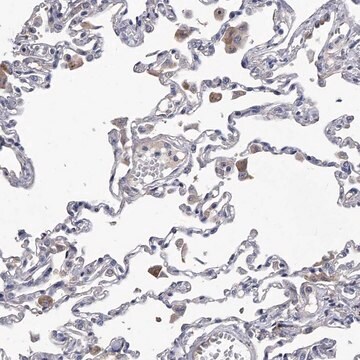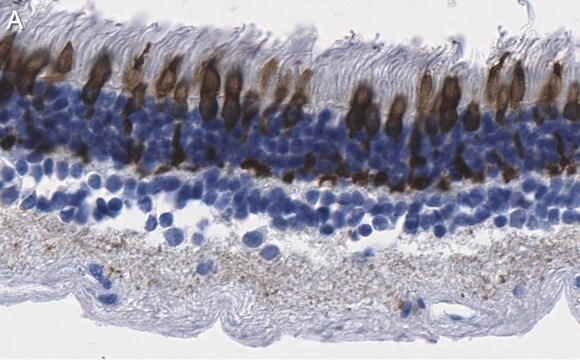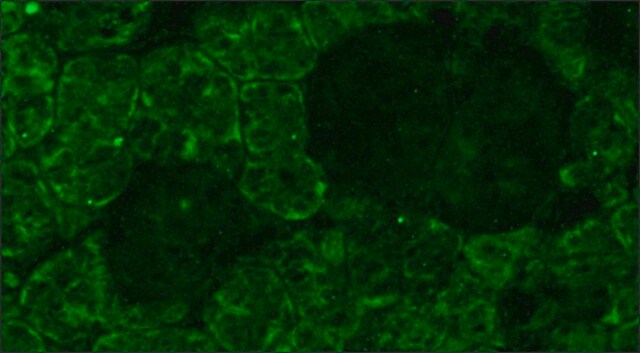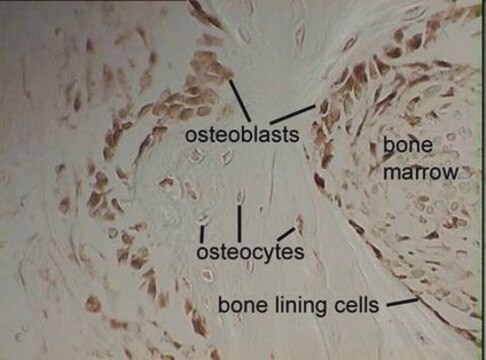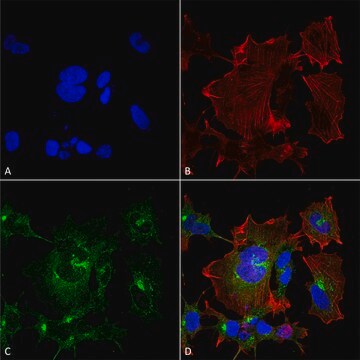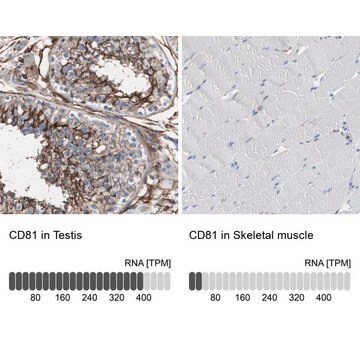MABN2492
Anti-Green/Red Cone Opsin Antibody, clone 7G8
clone 7G8, from mouse
Synonym(e):
Medium-wave-sensitive opsin 1, Green cone photoreceptor pigment, Green-sensitive opsin, GOP, Long-wave-sensitive opsin 1, Red-sensitive opsin, ROP)
About This Item
Empfohlene Produkte
Biologische Quelle
mouse
Antikörperform
purified immunoglobulin
Antikörper-Produkttyp
primary antibodies
Klon
7G8, monoclonal
Speziesreaktivität
human
Methode(n)
immunohistochemistry: suitable (paraffin)
Isotyp
IgG1κ
NCBI-Hinterlegungsnummer
Posttranslationale Modifikation Target
unmodified
Angaben zum Gen
human ... OPN1MW(2652)
Allgemeine Beschreibung
Spezifität
Immunogen
Anwendung
Neurowissenschaft
Qualität
Immunohistochemistry (Paraffin) Analysis: A 1:250 dilution of this antibody detected Green/Red Cone Opsin in human retina tissue sections.
Zielbeschreibung
Physikalische Form
Lagerung und Haltbarkeit
Sonstige Hinweise
Haftungsausschluss
Sie haben nicht das passende Produkt gefunden?
Probieren Sie unser Produkt-Auswahlhilfe. aus.
Empfehlung
Analysenzertifikate (COA)
Suchen Sie nach Analysenzertifikate (COA), indem Sie die Lot-/Chargennummer des Produkts eingeben. Lot- und Chargennummern sind auf dem Produktetikett hinter den Wörtern ‘Lot’ oder ‘Batch’ (Lot oder Charge) zu finden.
Besitzen Sie dieses Produkt bereits?
In der Dokumentenbibliothek finden Sie die Dokumentation zu den Produkten, die Sie kürzlich erworben haben.
Unser Team von Wissenschaftlern verfügt über Erfahrung in allen Forschungsbereichen einschließlich Life Science, Materialwissenschaften, chemischer Synthese, Chromatographie, Analytik und vielen mehr..
Setzen Sie sich mit dem technischen Dienst in Verbindung.
